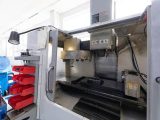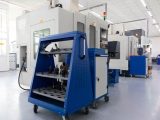
How Engineered Smoke Control Systems Improve Building Safety
October 8, 2025In the event of a fire, smoke presents a greater danger than flames. It reduces visibility, spreads toxic gases, and makes evacuation more difficult. Nowadays, a building design relies on advanced systems to manage these risks, and one of the most effective is the engineered smoke control system. Integrated as part of fire protection engineering, these systems are designed to maintain tenable conditions for occupants and support firefighters during emergencies.
The Role of Smoke in Fire Safety
Smoke is the primary cause of fatalities in many building fires, making its management a priority in fire protection engineering. Without proper control, smoke can quickly fill escape routes such as staircases and corridors, trapping occupants. The engineered smoke control system addresses this by using fans, vents, and pressure differentials to limit smoke spread. Keeping evacuation paths clear provides people with a safer exit during emergencies.
Another important aspect is how smoke affects emergency responders. Firefighters require visibility to locate the source of the fire and rescue those at risk. By reducing smoke concentration in targeted areas, the system creates conditions where responders can work more effectively.
How an Engineered Smoke Control System Works
These systems are designed based on engineering calculations and simulations that consider building layout, fire loads, and occupant density. They typically employ mechanical ventilation, natural ventilation, or a combination of both to manage smoke movement. Mechanical systems use fans and ducts to extract smoke, while natural systems rely on strategically placed openings that allow smoke to rise and exit.
Positive pressure systems are another approach, particularly in stairwells. By maintaining higher air pressure in escape routes, they prevent smoke from entering, keeping these areas safe for evacuation. The effectiveness of an engineered smoke control system lies in its ability to adapt to different building types, whether it is a commercial high-rise, industrial facility, or residential complex.
Benefits of Installing Smoke Control Systems
The installation of smoke control systems offers several benefits that go beyond compliance with regulations. Firstly, they extend the available time for safe evacuation by keeping routes free of smoke. This is especially important in high-occupancy buildings such as malls, hospitals, or office towers, where evacuation may take longer.
Additionally, smoke control systems support business continuity. Buildings that recover more quickly after fire incidents experience fewer disruptions, protecting both assets and operations. In fire protection engineering, this demonstrates that smoke control is about safety and reducing long-term risks for building owners and occupants.
Key Considerations in Design and Maintenance
Effective smoke control requires careful planning during the design phase, where engineers must account for factors such as building height, ventilation systems, and occupancy patterns to ensure the system performs as intended. Collaboration between architects, fire protection engineers, and regulatory authorities ensures the system aligns with safety codes.
Maintenance is equally important, as regular inspections, testing, and servicing of fans, vents, and control panels ensure the system remains reliable. Neglecting maintenance can compromise performance during an actual fire, undermining the safety benefits it provides. For this reason, building managers should treat upkeep as a continuous responsibility rather than a one-time task.
Applications in Different Building Types
The engineered smoke control system is versatile and can be applied to various building categories. In high-rise buildings, it ensures stairwells and lift lobbies remain clear for evacuation. In underground car parks, it helps remove smoke generated by vehicle fires, maintaining visibility for occupants and responders. For industrial facilities, the system supports worker safety while protecting valuable equipment from extensive smoke damage.
Public spaces such as airports and shopping centres also benefit significantly from a smoke control system, as these facilities require engineered solutions that account for multiple evacuation routes and long travel distances. In such cases, smoke control is not an added feature but a fundamental element of fire safety planning.
Conclusion
An engineered smoke control system is a vital component of building safety, reducing the risks posed by smoke during fire incidents. Integrated within fire protection engineering, it safeguards occupants, assists firefighters, and minimises property damage. From design to maintenance, its effectiveness depends on careful planning and consistent oversight.
Invest in safer buildings today. Contact SHEVS IFT Consultants for professional expertise in engineered smoke control system design and fire protection engineering.








